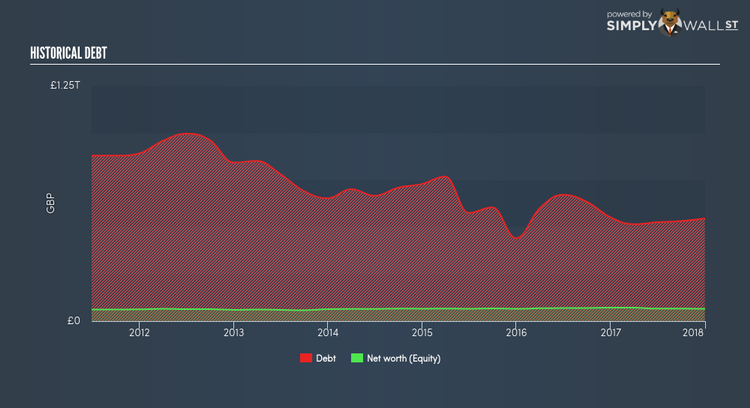Are You Considering All The Risks For Barclays PLC’s (LON:BARC)?

Barclays PLC (LSE:BARC) is a large, commercial bank with a market capitalisation of UK£36.64B. The biggest risk most large banks face is credit risk, measured by the level of bad debt it writes off. During the Global Financial Crisis, large financial institutions with commercial banking arms lost billions of dollars in equity due to their lending portfolios’ exposure to the turbulent credit market. This led to investors losing trust in these once stable financial stocks. Levels of bad debt and liabilities can be useful insights into Barclays’s engagement with risky lending practices and operational prudency. Today we will talk about some important bank-specific metrics to better understand financial stock investments before taking the plunge. View our latest analysis for Barclays
What Is An Appropriate Level Of Risk?
Barclays is considered to be in a good financial shape if it does not engage in overly risky lending practices. So what constitutes as overly risky? Total loans should generally be made up of less than 3% of loans that are considered unrecoverable, also known as bad debt. When these loans are not repaid, they are written off as expenses which comes directly out of the bank’s profit. With a ratio of 1.61%, the bank faces an appropriate level of bad loan, indicating prudent management and an industry-average risk of default.
Does Barclays Understand Its Own Risks?
Barclays’s ability to forecast and provision for its bad loans relatively accurately indicates it has a good understanding of the level of risk it is taking on. If it writes off more than 100% of the bad debt it provisioned for, then it has poorly anticipated the factors that may have contributed to a higher bad loan level which begs the question – does Barclays understand its own risk?. Barclays’s low bad loan to bad debt ratio of 77.61% means the bank has under-provisioned by -22.39%, indicating either an unexpected one-off occurence with defaults or poor bad debt provisioning.
Is There Enough Safe Form Of Borrowing?

The nature of Barclays’s’ business involves lending out borrowed money. Customer deposits are the least risky form of borrowing as they are less volatile in terms of interest rate paid and amount available. The general rule is the higher level of deposits a bank holds, the less risky it is considered to be. Since Barclays’s total deposit to total liabilities is below the sensible margin at 44.16% compared to other banks’ level of 50%, this means the bank should increase its deposit levels or lower its liabilities in order to meet the prudent minimum level. At the current level, the bank’s safer form of borrowing makes up less than half of its liabilities, making it a riskier investment.
Next Steps:
Compared to the total liabilities Barclays holds, its safer form of borrowing is undesirably lower. Furthermore, its imprudent bad debt management could negatively impact its cash flows. These risk indicators indicate that its operational risk management could be further improved to give investors higher confidence in the business. Today, we’ve only explored one aspect of Barclays. However, as a potential stock investment, there are many more fundamentals you need to consider. I’ve put together three key aspects you should further examine:
Future Outlook: What are well-informed industry analysts predicting for BARC’s future growth? Take a look at our free research report of analyst consensus for BARC’s outlook.
Valuation: What is BARC worth today? Has the future growth potential already been factored into the price? The intrinsic value infographic in our free research report helps visualize whether BARC is currently mispriced by the market.
Other High-Performing Stocks: Are there other stocks that provide better prospects with proven track records? Explore our free list of these great stocks here.
To help readers see pass the short term volatility of the financial market, we aim to bring you a long-term focused research analysis purely driven by fundamental data. Note that our analysis does not factor in the latest price sensitive company announcements.
The author is an independent contributor and at the time of publication had no position in the stocks mentioned.

